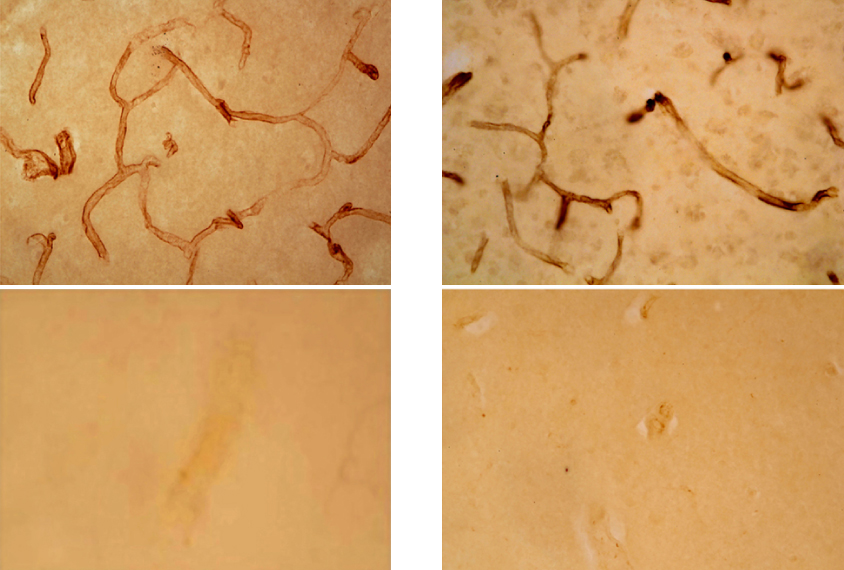
THIS ARTICLE IS MORE THAN FIVE YEARS OLD
This article is more than five years old. Autism research — and science in general — is constantly evolving, so older articles may contain information or theories that have been reevaluated since their original publication date.
Four years ago, Efrain Azmitia saw something unusual under the microscope. Peering at postmortem brain tissue from a person with autism, the seasoned anatomist noticed that his stain, which he had expected to highlight dividing neurons, instead stuck to the edges of worm-like structures.
He knew right away what the structures were: blood vessels. He found the same thing in brain tissue from nine other individuals with autism — but, as he expected, not in any brain tissue from controls older than 2 years.
“That was a total shock,” says Azmitia, professor of biology at New York University. “I never really considered the vasculature as a target, but here it was just staring at me.”
The findings, published 14 December in the Journal of Autism and Developmental Disorders, suggest that the growth of blood vessels — a process called angiogenesis — runs amok in the brains of people with autism1.
The quality of the work is “incredible,” says Manuel Casanova, chair of psychiatry at the University of Louisville in Kentucky, who was not involved in the work. However, he adds, the study is small and may not be generalizable to all people with autism. Other experts question whether the new findings actually indicate that blood vessel growth goes awry in autism.
Wormy wonder:
Azmitia stumbled upon his microscopic discovery while investigating the idea that, in people with autism, neurons keep dividing during development long after they should have stopped. He and his colleagues had collected postmortem brain tissue from 10 people with autism and 10 controls who ranged in age from 1 to 32 years. The researchers sampled four brain areas implicated in autism: the superior temporal cortex, which processes sounds; the fusiform cortex, involved in face recognition; the brainstem, a sensory and motor relay station; and the cerebellum, which controls movement.
The researchers first stained the samples with a marker for a protein that is expressed only in dividing cells. Instead of collecting in spider-shaped neurons in the autism samples, the marker labelled cells called pericytes, which surround blood vessels and are involved in angiogenesis. By contrast, brain tissue from controls older than 2 years lacked large swaths of the brown-colored stain, suggesting that the blood vessel cells divide excessively after the age of 2 in people with autism. A lot of angiogenesis occurs during early brain development, but that growth ordinarily slows down by adulthood, says Keith Young, professor of psychiatry and behavioral science at Texas A&M Health Science Center in Temple, Texas.
To convince themselves that the findings were not a fluke, the researchers stained the tissue with a marker for immature, migrating endothelial cells, which line blood vessels and are involved in their growth. Here, too, the stain colored blood vessels in all of the autism samples, but in only one of the controls.
Unexpected twist:
The findings support the idea that blood vessel growth continues unchecked in people with autism.
“It’s pretty clear that all of the autism cases that they had were quite different than the controls,” Young says.
When the researchers used a third stain that marks all blood vessels, along with software that traces the vessels and measures their length, however, they found no differences in blood vessel length between the autism and control tissue. Azmitia and his team are investigating whether the diameter of blood vessels is altered in people with autism.
Until further studies find evidence for alterations in blood vessel structure, it remains unclear whether vascular growth is truly altered in autism, Young says. “I think that it’s still up in the air whether or not angiogenesis itself might be affected.”
Still, Young says the findings open up new avenues for research. For example, scientists might explore the causes and consequences of the abnormal protein expression in the cells lining blood vessels. “It certainly advances the field and gives us some good pathways and signaling molecules to go look at.”
By joining the discussion, you agree to our privacy policy.